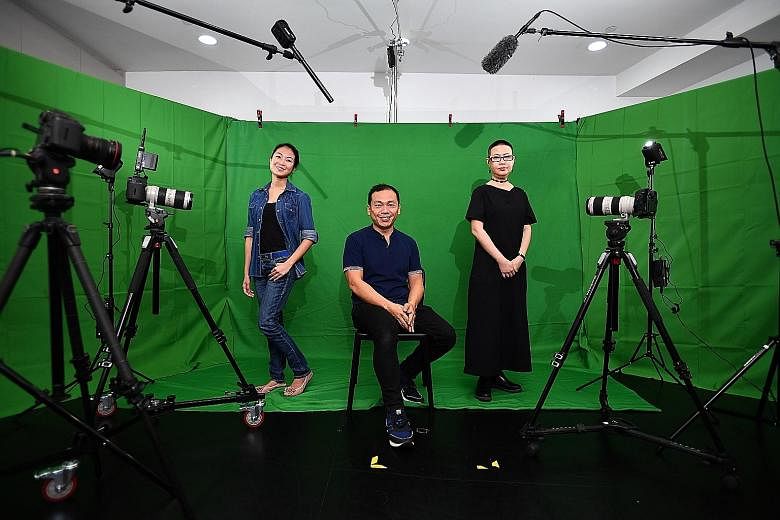Theatre practitioner Peter Sau, 44, would like to see a restaging of Romeo And Juliet where Juliet is in a wheelchair, Romeo has a stump for his arm and the nurse has Down syndrome.
"I'd like to see how these different characters can be embodied and performed by disabled actors. That kind of representation is going to be very multi-layered," says the founder of Project Tandem, a theatre collective for artists with disabilities.
On the wider topic of access, he adds: "Artists from mainstream contexts should strive to create new 'languages' to reach out to more audiences. Not just the spoken language, but to really integrate the spoken, physical, sensorial and the visual to be more sensitively woven together."
Mr Sau, who is also an educator, is one of several Singaporeans who will be speaking at next month's Arts & Disability Forum.
The event, which will run from Oct 7 to 9, is organised by the National Arts Council and charity Very Special Arts Singapore, and will feature more than 10 speakers from different countries.
It will be set to the theme Cultivating Collaborations, Increasing Access; and consist of keynote presentations, panel discussions and workshops.
Due to the pandemic, the event will be held online for the first time since its launch in 2015. The organisers expect more than 300 people from Singapore and abroad to take part.
Mr Sau and his fellow Singapore speakers - artist and researcher Dawn-joy Leong, 55; and theatre actor and singer Claire Teo, 20 - spoke to The Straits Times last week after filming and recording themselves for a presentation that will accompany their panel discussion.
They have been encouraged to audio-describe every pictorial PowerPoint slide, Mr Sau says, adding that the audio description is not hidden, but audible for everyone.
Dr Leong, who is autistic, chimes in: "I think this should be the new normal - when you don't have to press a button to get your access.
"It is all there: live captioning, audio description. Then it just becomes normal. You are inclusive normally."
Ms Teo, who is visually impaired, adds: "Hopefully one day, the distinction between the disabled and the mainstream will no longer be necessary."
The keynote speakers at next month's forum are British dance veteran Ruth Fabby, artistic director of Disability Arts Cymru; and Australian arts performer and educator Caroline Bowditch, chief executive of Arts Access Victoria.
There will also be discussions and hands-on activities led by experts such as Malaysian social entrepreneur Stevens Chan, who founded the social enterprise Dialogue in the Dark Malaysia and the inaugural Art Includes Festival 2019 in Kuala Lumpur; Indian photographer and disability arts practitioner Partho Bhowmick, who started the Blind With Camera photography school for the visually impaired; and Singapore social advocate Jean Loo, co-founder of inclusive arts movement Superhero Me.
In recent years, there have been efforts to make the arts scene more inclusive. The Access Arts Hub consortium was founded in 2018, and more performing arts groups have been offering signed and audio-described shows.
The Esplanade has presented PLAYtime! - sensory-friendly performances for children with special needs - and the National Gallery Singapore has worked with the Disabled People's Association and Levelfield Consultants to produce an online access guide to help people with disabilities plan visits.
Still, more can be done. Dr Leong would like to see more training support and funding for artists with disabilities - including a separate grant dedicated to them.
Funding is a key consideration, not least because of the added costs of improving access - for example, hiring access workers to accompany people with Down syndrome to the workplace.
She adds that there could also be more productions that put people with disabilities in the driver's seat or actively engage them in the creative process.
Something About Home, a pan-disability theatrical performance directed by Sau and commissioned by National Gallery Singapore for the Light to Night festival in January, was one such show that did this. Both Dr Leong and Ms Teo were in the cast.
Dr Leong adds: "We are not a charity showcase. We are professionals. And leadership towards that is very important."
• For more information about the Arts & Disability Forum, or to register for it, visit this website. Admission is free.
Correction note: This article has been edited for accuracy.


